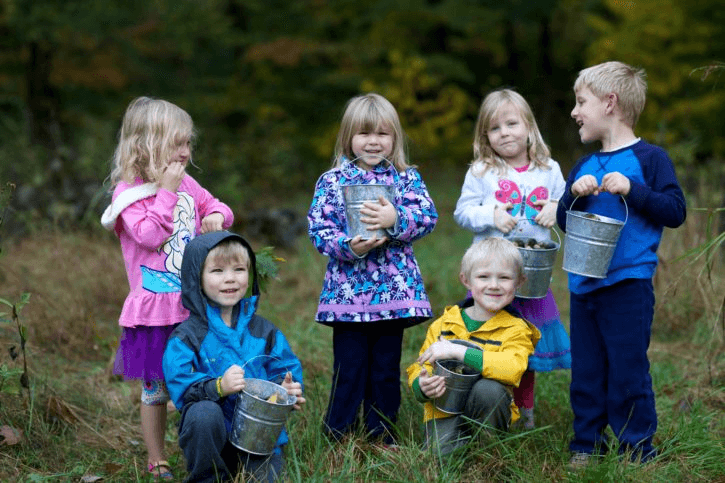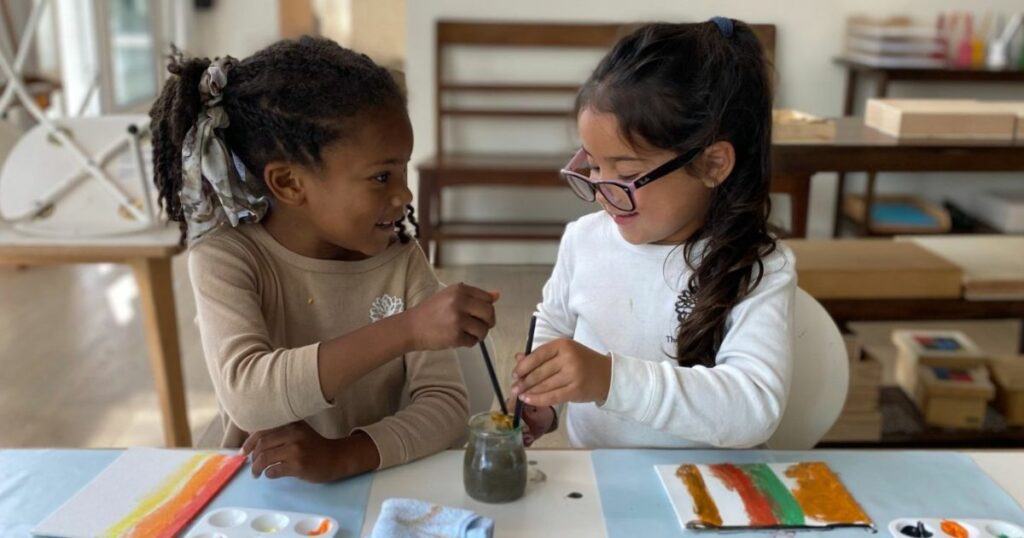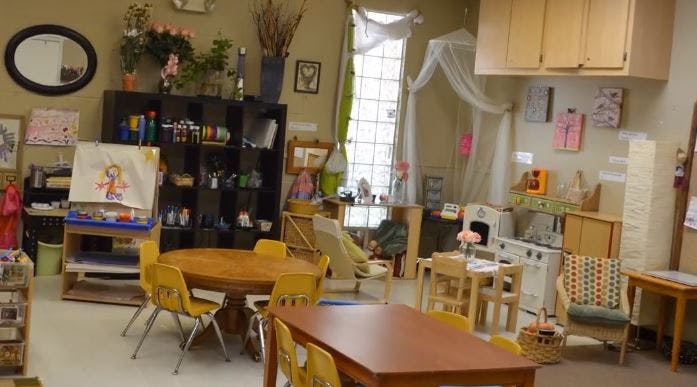Tables and chairs were downsized to child size, children were given real tasks to complete, and observation (rather than testing) became the primary method for determining a child’s growth. Another alteration was multi-age classrooms.
Montessori age groups are as follows:
• Infant: birth – 18 months
• Toddler: 18 months – 3 years
• Preschool: 3-6 years
• Lower Elementary: 6-9 years
• Upper Elementary: 9-12 years
• Middle School: 12-14 years
• High School: 15-18 years
Mixed-age groups are a noteworthy difference between Montessori and typical educational programs because traditional schooling generally groups children of the same age. There are benefits and drawbacks to mixed-age groups, but I believe the benefits far exceed any potential drawbacks.
What Are the Benefits of Mixed-Age Groups in Montessori?
1. Interaction:

Because they contact children of varying ages and skills regularly, children learn to help and be helped by other children in a mixed-age group environment. Children develop an appreciation for their successes and the accomplishments of others. Also, they are naturally challenged by others’ accomplishments.
2. Learning from each other:
Older children develop patience and tolerance, and they act as role models and teachers for the younger ones. When an older child teaches a younger one, it reinforces previously learned principles and helps with complete mastery. By seeing the older students in the class, younger children can learn about civility, manners, and conflict resolution.
3. Work at the Speed of a Child:
Because teachers are not required to establish the learning speed for the entire class, each kid can learn at their rate. This is in stark contrast to traditional schooling, in which everyone goes to page 33 of the book and stays there until all of the children understand the topic.
4. Community:
Children develop a strong feeling of community and stability by staying in the same classroom for three years, with two-thirds of a class returning each year. This community assists students in becoming role models for one another.
5. Familiarity with the subject:
Being in the same classroom year after year allows a teacher to get to know each child’s learning talents, style, and developmental stage, allowing them to set the learning agenda, build on strengths, and address problems.
6. Homeschooling:
Homeschooling is a perfect fit with the Montessori framework because it is naturally multi-aged. Siblings have a built-in support system for education and play, and they benefit in the same ways that mixed-age friends do.
Is There a Drawback?
1. Isolation is the first step.
One of the most common criticisms of the Montessori mixed-age group classroom is that kids tend to work in isolation on their projects, with little social cooperation. This might be the case in any school, mixed-age or not, that allows kids to work at their own pace.
2. Overburdened Senior Citizens:
Some people believe that a teacher should be the one to assist a youngster when they have difficulty understanding a concept. It’s always possible that older children are unreliable sources or ineffective teachers who could cause a peer to become even more confused. Older students who teach or assist younger students may be missing out on some of their knowledge.
3.Teachers have it tougher:
In addition, the teacher is expected to teach three grades (or more) instead of just one. This is difficult. The fact that the teacher clearly understands what the child has to accomplish to progress to the next level; however, helps to balance things out.
Takeaway:
Mixed-age classrooms have been demonstrated to have fewer behavior occurrences. This is most likely due to a combination of self-paced learning’s sense of community, comfort, and lack of pressure. You’re in for a treat if you ever get the chance to observe a mixed-age classroom.

The kids work together to build a community of learning and friendship. If you’re concerned about multi-age classrooms, rest assured that, when done correctly, they’re a thing of beauty. So, why worry? Choose the best Montessori School for your kid!






